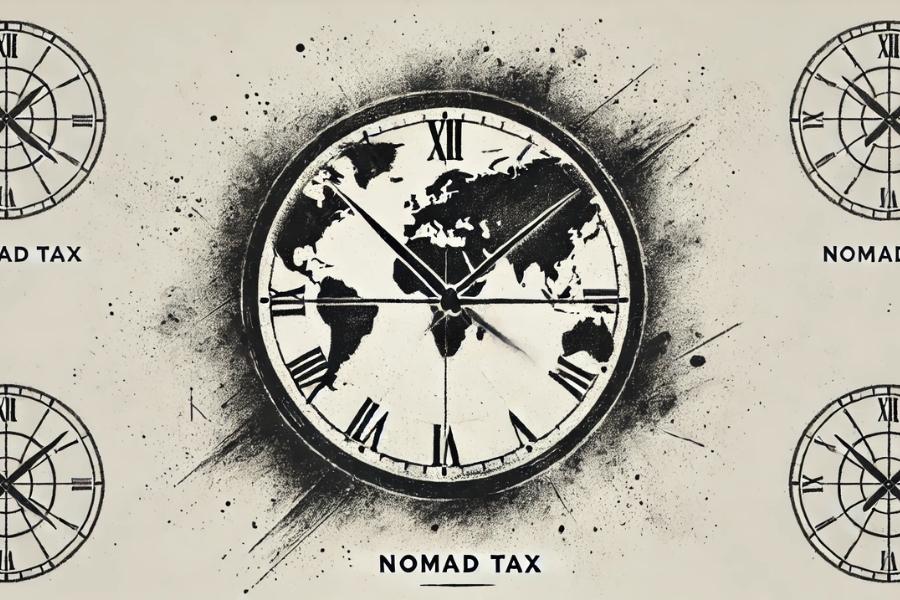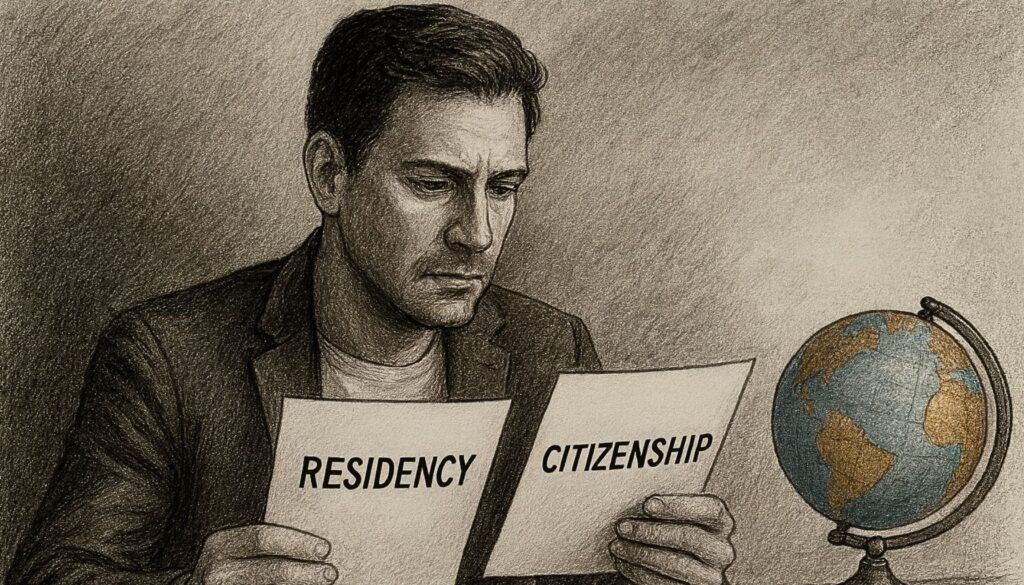For decades, in the West, particularly in the United States, there has been a sense of economic stability and absolute control over the global financial system. Under the influence of the dollar, the world seemed to spin in one direction, and the dependence on this currency solidified American dominance. This “dream” of security and economic stability has allowed many countries and citizens to view the current financial system as a solid, immovable, and, above all, convenient structure.
However, while the West relied on this perception of control, a new economic force has begun to emerge from the shadows: BRICS. This alliance, which brings together some of the most powerful emerging economies, is moving to challenge the dominance of the dollar and create an alternative financial system. The impact of BRICS on the dominance of the dollar is undeniable, and this alliance presents itself as a bold alternative that promises not only to redistribute global economic power but also to offer new opportunities to those countries tired of living under the influence of a single currency.
The question is no longer whether the dominance of the dollar will endure, but rather how long it can hold up against the growth of an alliance seeking to rewrite the rules of the global financial game.
Indice del artículo
The Dominance of the Dollar: Global Financial Control of the U.S.
To understand the impact of BRICS on the dominance of the dollar, we must first examine how the United States has managed to maintain its financial hegemony on a global scale. Since the end of World War II, the dollar has been the reference currency for international transactions, and the world economy has revolved around its power. This situation is not a coincidence; it is the result of a series of carefully implemented strategies designed to ensure that the United States retains financial control.
One of the most important mechanisms for sustaining this supremacy is the SWIFT system (Society for Worldwide Interbank Financial Telecommunication), a secure communication network used by banks worldwide to conduct money transfers. Although SWIFT may seem like a simple channel for banking information exchange, it is much more than that.
By routing the majority of international transactions through U.S. banks and using the dollar as the base currency, the United States gains a unique advantage: the ability to supervise, control, and, in certain cases, block money transfers between countries. This system allows the U.S. to exert almost absolute influence over global capital flows, even when transactions do not directly involve its territory.
This structure has turned the dollar into a tool of global financial control, reinforcing the United States’ position as the undisputed leader of the economic system. However, with the impact of BRICS on the dominance of the dollar and its proposal for alternatives to SWIFT, the landscape is beginning to change. For many countries, this dependence on the U.S. system has ceased to be advantageous and has become a limitation. In response, BRICS is positioning itself as an emerging force seeking to break away from this model and establish a more balanced and autonomous financial system.
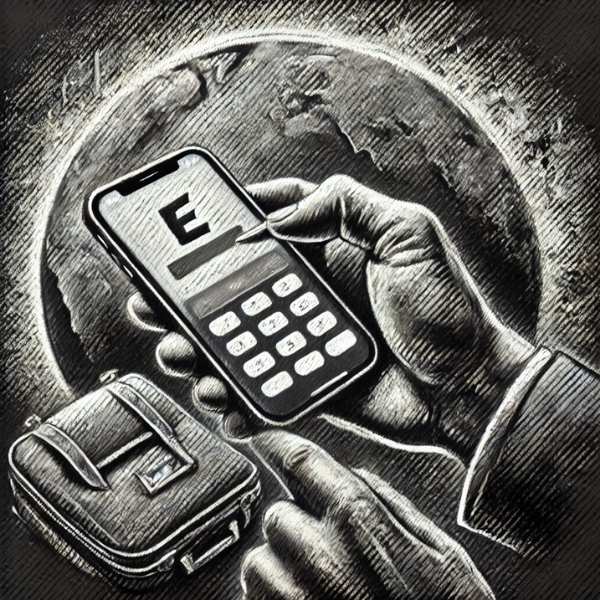
BRICS: The Alternative to the Western-Dominated Financial System
The creation of BRICS emerged as a response to the dominance of the dollar and the financial control that the United States has exercised over the global economy for decades. Officially founded in 2009 with Brazil, Russia, India, and China, and expanded with the inclusion of South Africa in 2010, this bloc represents a combination of emerging economies determined to create a financial structure that allows them to operate with greater autonomy. Unlike the centralized Western system, BRICS promotes a vision of economic cooperation that is less dependent on a single currency.
The frustration of member countries with the dominance of the dollar has been a key motivation. Since the Bretton Woods agreements, the dollar has consolidated its position as the global reference currency, allowing the U.S. to maintain decisive influence over international financial transactions and to impose economic sanctions.
Through initiatives like the New Development Bank (NDB) and the proposal for a common currency backed by gold, BRICS aims to reduce dependence on the SWIFT system and minimize the effects of U.S. monetary policies on their economies, which often cause instability in developing countries.
Strengths of this Union and the Impact of BRICS on the Dominance of the Dollar
Each member country of BRICS brings a unique strength that enhances the bloc’s capacity to become a transformative force on the global stage, especially in its challenge to the dominance of the dollar.
With founding countries like Brazil, Russia, India, China, and South Africa, along with new members (United Arab Emirates, Saudi Arabia, Iran, Egypt, and Ethiopia), BRICS+ now represents approximately 45% of the global population and a significant share of global trade and oil production. This growth expands its influence in crucial sectors such as energy, finance, and trade, where it is beginning to establish itself as a real counterweight to the Western-led system.
China and Russia, the heavyweights of the alliance, offer not only their vast economies but also a strategic willingness to lead the “dedollarization” movement by creating alternative payment systems and a potential gold-backed currency.
In the energy sector, countries like Saudi Arabia and the United Arab Emirates also strengthen this alliance by diversifying their exports and developing policies that prioritize economic collaboration outside the orbit of the dollar. The expansion of BRICS could enable deeper economic integration among its members, especially in energy and technology, where each country is starting to align its internal policies to favor transactions in local currencies, thereby reducing dependence on the U.S. financial system.
However, the effective integration of new members brings challenges of cohesion and coordination. Geopolitical differences, such as India’s alignment with the West on certain issues and Iran’s stance against the U.S., can complicate the implementation of common policies. Despite this, BRICS continues to advance in creating economic infrastructure, such as the New Development Bank (NDB), which prioritizes loans in local currencies, helping to stabilize member economies against fluctuations in traditional currencies.
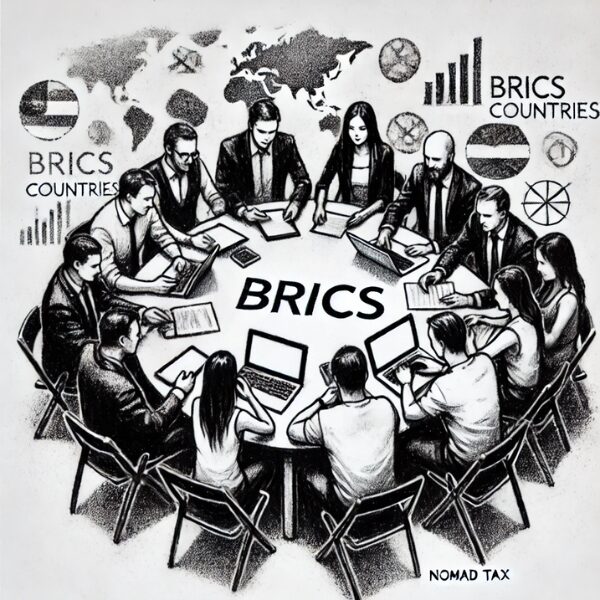
Conflicts and Internal Challenges: Can BRICS Stay United in Its Fight for Financial Independence?
As BRICS advances in its ambitions for financial independence, it faces a significant challenge: the diversity of positions and priorities among its members. While they all share the goal of reducing dependence on the dollar and reforming the global economic system, their approaches and relationships with the United States introduce complexities that threaten their internal cohesion.
China and Russia, the pillars of the alliance, seek to establish alternative financial systems that minimize the role of the dollar, but their geopolitical interests sometimes overshadow those of other members. China, for instance, has consistently promoted the expansion of BRICS, often pushing for the inclusion of countries like Iran and Saudi Arabia to strengthen its sphere of influence in the Middle East.
This can create tensions with India, which maintains important economic and security ties with the U.S. and other Western countries. Border disputes between India and China have also added a layer of conflict, weakening the unity of the group and posing challenges to its ability to act as a cohesive bloc.
Additionally, the inclusion of Gulf nations like Saudi Arabia and the United Arab Emirates adds complexity to the balance of power within BRICS. These countries have strong financial and diplomatic ties with the U.S., and while they seek to diversify their relationships by participating in BRICS, they are likely to adopt a cautious stance on projects that directly challenge the West.
For example, Saudi Arabia has shown interest in joining alternative payment systems that include transactions in yuan, but it primarily keeps its strategic currency reserves in dollars, reflecting a middle-ground position.
The project of dedollarization within BRICS also faces technical and logistical difficulties. A key goal of the group has been to create a common currency, but differences in the monetary and fiscal policies of member countries, along with the lack of a uniform regulatory framework, make this goal difficult to achieve in the short term. Even within BRICS, some leaders have expressed that their objective is not to replace the SWIFT system but to develop a space where countries can negotiate in their local currencies, such as the ruble or yuan, to avoid the effects of Western sanctions.
The mBridge System: The Masterstroke of BRICS
The mBridge project, developed by BRICS in collaboration with the Bank for International Settlements (BIS), is shaping up to be an alternative to SWIFT that promises to revolutionize international payments and reduce dependence on the dollar. This system uses blockchain technology and central bank digital currencies (CBDCs) to facilitate fast and secure cross-border transactions, processed in real time and designed to bypass the limitations imposed by traditional Western systems.
The goals of mBridge are twofold: on one hand, to decrease the costs and slowness associated with SWIFT, and on the other, to provide BRICS member countries with an independent payment platform that avoids U.S. oversight. This move is crucial for BRICS countries, especially for those like Russia and Iran, which have experienced blockades and sanctions imposed by the U.S. and its allies. The platform enables transactions to be carried out directly in the local currencies of member countries, reducing exposure to the dollar and, by extension, vulnerability to economic sanctions.
The mBridge platform, also known as BRICS Pay, is expected to be ready for full use in the coming months after a testing phase with real transactions. Currently, it has more than 150 interested countries looking to adopt it to strengthen their payment networks and reduce dependence on SWIFT. Although it is still in development, the acceptance of mBridge in other countries could erode the dollar’s dominance in global trade, as it would simplify direct transactions between emerging economies without having to go through dollar intermediation.
This alternative represents a significant shift in the global financial power balance, and its success could open new commercial and financial opportunities for BRICS members and their partners. Furthermore, as mBridge could integrate with other payment infrastructures such as the Russian SPFS or the Indian UPI, its ability to adopt a global operational model makes it a real threat to the dollar’s hegemony in the financial system.
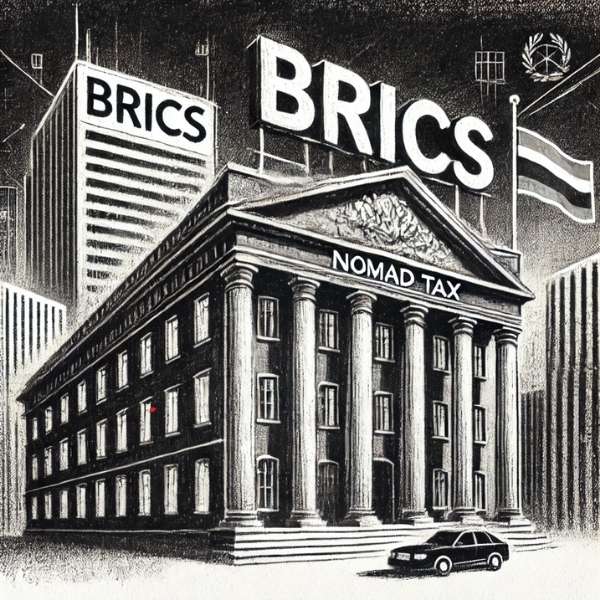
Protect your assets and diversify your investment in BRICS. Check out our solutions at Nomad Tax.
BRICS’s transition to an alternative financial system presents a potential challenge to the U.S. dollar and the euro. The dedollarization initiatives of BRICS, driven by China and Russia, are encouraging other nations to rely less on the dollar and to explore transactions in their own currencies.
This trend has already begun to erode global dollar reserves, which have fallen to approximately 59% of international reserves, down from 72% two decades ago. This decline is partly due to an increase in bilateral and regional trade agreements in local currencies, which reduces the need to use the dollar as an intermediary in international trade transactions.
As member countries like Russia and Iran, along with other potential allies, adopt systems like BRICS Pay and mBridge, the impact is becoming visible in the U.S. market. This decrease in dollar demand not only diminishes U.S. economic influence but also increases the risk of inflation, as dollars returning to the country contribute to a larger money supply without a proportional increase in their value.
The rise in inflation and the growing skepticism about the dollar’s hegemony are motivating other countries, including BRICS members and other nations from the Global South, to seek more stable alternatives, such as gold-backed currencies or central bank digital currencies (CBDCs).
If BRICS manages to consolidate an effective alternative payment system and attract other countries, the role of the dollar as a store of value and as a reference currency for global trade could further deteriorate, impacting not only the U.S. but also economies closely linked to the dollar, such as that of the European Union.
Key Regulations of BRICS to Strengthen Its Influence
The BRICS group continues to work on key regulations that could change its role in the global financial system. These initiatives address everything from cryptocurrencies to energy, and more recently, the possibility of establishing a space for free movement among its members. Each of these strategies aims to reinforce the independence and economic cooperation of the bloc, in an effort to reduce dependence on Western economies.
Cryptocurrency and Digital Asset Regulation
BRICS countries, especially Russia and China, have made advances in cryptocurrency regulations as an alternative to the dollar for international transactions. Russia, for example, has legalized cryptocurrency mining and is implementing a regulatory framework that allows the use of digital assets in international payments, enabling it to bypass sanctions and traditional systems like SWIFT.

Energy Price Control and Self-Sufficiency
Another crucial aspect of BRICS’s agenda is the regulation and control of energy prices among member countries, many of which are major producers of oil and gas, such as Russia, Brazil, and the recently added Saudi Arabia and the United Arab Emirates.
This control allows BRICS to negotiate price agreements and establish preferential energy tariffs, decreasing their dependence on Western energy markets. As these countries reinforce collaboration in critical sectors like energy and minerals, the group is positioned to dominate key segments of the global supply chain, especially in the context of essential minerals for the energy transition.
Free Movement Space
BRICS is also considering the possibility of creating a space for the free movement of people and capital, similar to the European Schengen Area. This would allow citizens and businesses from member countries to operate, travel, and invest more easily within the bloc. Such an initiative would strengthen economic ties, improve labor mobility, and boost the exchange of goods and services, consolidating BRICS as a more integrated and autonomous economic union.
A New Opportunity for Entrepreneurs and Investors?
BRICS offers a wide range of opportunities for entrepreneurs and investors, particularly those interested in diversifying their assets or establishing themselves in rapidly growing economies. With the recent expansion of the group, now including Middle Eastern and African countries like Saudi Arabia, the United Arab Emirates, and Egypt, BRICS represents a market covering nearly 45% of the global population and almost 36% of global GDP adjusted for purchasing power parity.
This reach provides unique access to emerging markets with significant growth potential in key sectors such as energy, technology, manufacturing, and sustainable finance.
For investors, BRICS has created a stability framework that contrasts with more developed markets and their associated risks. For instance, the presence of a network of resource-rich countries, such as Russia and Brazil, along with the advancement of investment programs in renewable energy and sustainability in economies like India, China, and South Africa, makes this bloc particularly attractive for those looking to engage in long-term projects in emerging and high-impact sectors.
Additionally, the countries in the bloc are developing more flexible regulations that allow for greater capital mobility and offer tax incentives to attract talent and foreign capital, benefiting entrepreneurs wishing to establish their businesses in the region.
Moreover, the recent inclusion of African and Arab countries within BRICS opens doors for inter-regional collaboration in infrastructure and trade, enhancing the creation of competitive markets that increase business opportunities. With increasingly aligned policies to facilitate trade and technology transfer, BRICS provides a favorable environment for innovators and entrepreneurs looking to capitalize on the stability and growth of their developing economies.
In terms of asset protection, establishing a presence in BRICS can offer advantages for those seeking to diversify and safeguard their wealth against uncertainties in Western markets. New financial and investment schemes, such as those developed by the BRICS New Development Bank (NDB), focus on reducing reliance on external financing and supporting local projects, attracting investors seeking solid alternatives less vulnerable to fluctuations in the dollar and euro.
These factors position BRICS as an attractive destination for those looking not only for financial diversification but also for an investment platform in emerging economies with sustainable growth policies and programs in a changing global economy.
Conclusion: The Emerging Paradigm and the Continuous Evolution of BRICS
The BRICS bloc has significantly evolved since its initial formation, transforming into a real alternative to the traditional financial system dominated by the West. Through innovations like mBridge and its focus on independent economic regulation, BRICS presents a financial model where multiple currencies and payment systems coexist without central dependence on the dollar. This structural change offers its member countries, and those seeking to partner, new avenues for trade, investment, and asset protection.
